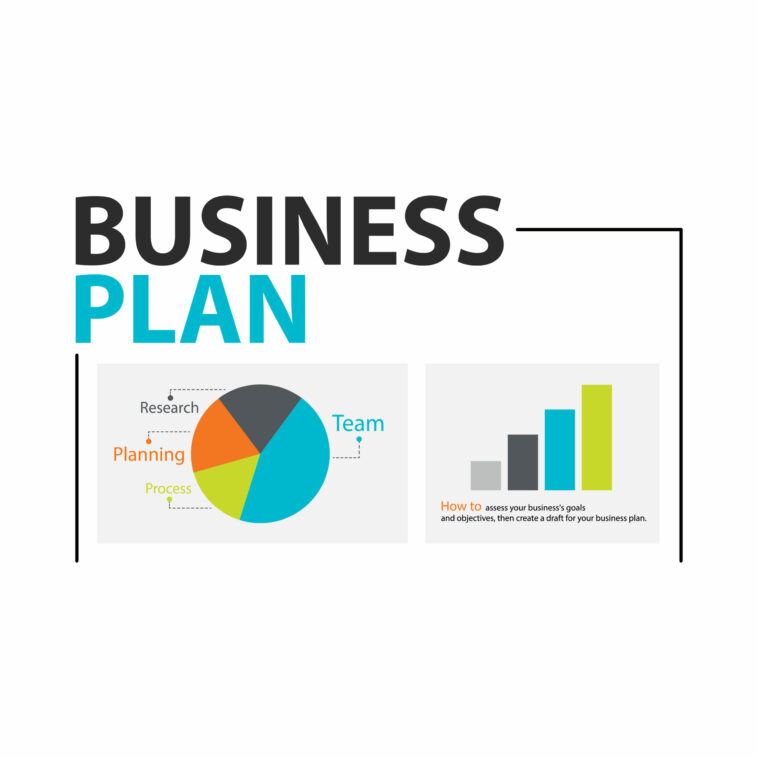Creating a business plan is one of the most important steps in launching or growing your business. Whether you’re seeking funding, preparing for expansion, or just want a clear roadmap for your business, a well-structured business plan can be your guiding light. If you’re not sure where to start, don’t worry—I’ve got you covered. In this guide, I’ll walk you through a comprehensive business plan template that you can customize to fit your unique vision. Let’s get your business on the path to success!
Here’s a detailed outline of a business plan, complete with explanations for each section to help you understand what’s needed and how to complete it effectively.
1. Executive Summary
The executive summary is a snapshot of your entire business plan and should provide an overview of your company. Although this is the first section of the plan, it’s often best to write it last after you’ve completed all other sections.
- Business Name and Location: State the official name of your business and where it is based.
- Mission Statement: Summarize your company’s purpose and what you aim to achieve.
- Product/Service Overview: Briefly describe the products or services your business offers.
- Business Objectives: Outline your short-term and long-term goals.
- Funding Needs: If you’re seeking financing, include the amount of funding you’re requesting.
Tip: The executive summary should be concise and compelling enough to capture the reader’s attention and make them want to learn more about your business.
2. Company Description
This section provides detailed information about your business, including its background, the problem it solves, and the market needs it meets.
- Business Overview: Provide a high-level description of your business, including what stage it’s in (startup, growing, established).
- Legal Structure: Specify whether your business is a sole proprietorship, partnership, LLC, corporation, etc.
- Industry Overview: Describe the industry your business operates in, including key trends, growth potential, and challenges.
- Unique Selling Proposition (USP): Explain what makes your business different from competitors. What’s your competitive edge?
3. Market Research
Understanding your target market is crucial to building a successful business. In this section, you’ll provide detailed information about your target audience, market size, and competitors.
- Target Market: Define who your ideal customers are. Include demographics like age, gender, income level, and location.
- Market Size: Estimate the size of your target market. Use data, research, or surveys to quantify the number of potential customers.
- Market Trends: Discuss trends in the market that may affect your business, such as technological advancements or changes in consumer behavior.
- Competitive Analysis: Identify your main competitors and analyze their strengths and weaknesses. Explain how you plan to compete with them and what differentiates you from them.
4. Organization and Management
In this section, outline your business’s organizational structure and introduce the key team members responsible for running it. Potential investors want to know that the business is in capable hands.
- Organizational Structure: Provide an organizational chart that details the roles and responsibilities of your team.
- Key Management Personnel: Introduce your leadership team. Include brief bios that highlight their experience, skills, and past successes.
- Ownership Information: Detail the ownership structure. Who owns the company, and what percentage do they own?
- Advisors: If you have advisors, mentors, or a board of directors, list their names and qualifications here.
5. Products and Services
This section should describe in detail the products or services your business offers. Be specific about what makes your product or service stand out and why customers will choose it over competitors.
- Product/Service Description: Provide a detailed explanation of your product or service, including features and benefits.
- Pricing Model: Explain how you price your product or service. Include details about margins, cost of goods sold (COGS), and any pricing strategies.
- Development Roadmap: If your product or service is still in development, outline the timeline for its completion and launch.
- Competitive Advantage: Explain how your product or service provides better value than what’s currently on the market.
6. Marketing and Sales Strategy
Your marketing and sales strategy is crucial for attracting customers and driving revenue. This section outlines how you plan to promote your business, attract customers, and grow your sales.
- Marketing Strategy: Detail how you’ll promote your business. Include digital marketing, social media, content marketing, SEO, email marketing, and paid advertising strategies.
- Sales Strategy: Describe your approach to selling your product or service. Will you have a sales team, rely on online sales, or focus on retail distribution?
- Customer Acquisition: Explain how you plan to attract and retain customers. Include any referral programs, partnerships, or customer loyalty strategies.
- Sales Forecast: Provide a sales forecast for the next 1–3 years. Use realistic assumptions based on market research and industry trends.
7. Funding Request (If Applicable)
If you’re seeking funding, this section is where you specify your needs. Be clear about how much capital you need, how it will be used, and what the expected return on investment will be for potential investors.
- Funding Requirements: State the total amount of funding you’re seeking.
- Use of Funds: Explain how the funds will be used (e.g., for product development, marketing, hiring, or expansion).
- Future Financial Plans: Discuss your long-term financial strategy and how you plan to repay loans or provide returns to investors.
8. Financial Projections
Your financial projections should demonstrate that your business is viable and will generate revenue. This section is critical for investors and lenders, as it shows how you expect your business to perform financially.
- Income Statement: Show expected revenue, expenses, and profits over the next 3–5 years.
- Cash Flow Statement: Provide a projection of cash flow, showing when money will be coming in and going out of the business.
- Balance Sheet: Outline your company’s assets, liabilities, and equity over the next few years.
- Break-even Analysis: Show when your business will become profitable and cover its expenses.
Tip: Use realistic assumptions based on market research and your company’s current performance. It’s better to be conservative and over-deliver than to promise unrealistic returns.
9. Appendix
The appendix is where you can include additional information that supports your business plan but doesn’t fit into the main sections. This might include resumes of key team members, product photos, market research data, contracts, or legal documents.
- Resumes: Include the resumes of your key team members to showcase their experience and qualifications.
- Market Data: Provide any relevant market research that supports your business strategy.
- Product Images: If applicable, include high-quality images of your products.
- Legal Documentation: Attach copies of licenses, permits, trademarks, patents, or any other legal documents relevant to your business.
Conclusion
Creating a business plan is more than just a formality—it’s a powerful tool that can help you navigate the complexities of running a business and securing funding. By following this business plan template, you’ll have a structured and comprehensive document that clearly outlines your business strategy, goals, and financial forecasts.
Whether you’re a startup looking to get off the ground or an established business aiming for expansion, a well-thought-out business plan will be your roadmap to success. So take the time to flesh out each section carefully and with precision, and you’ll be on the right path to achieving your business goals.
Frequently Asked Questions (FAQs)
1. Do I need a business plan if I’m not seeking investors?
Yes! Even if you’re not seeking funding, a business plan helps you clarify your goals, define your strategy, and ensure that you’re on track for success. It provides structure and direction for your business.
2. How often should I update my business plan?
Your business plan should be a living document that evolves as your business grows. Revisit it annually or whenever there are significant changes in your business, such as new products, shifts in the market, or changes in your financial situation.
3. How long should my business plan be?
There’s no one-size-fits-all answer to this. A solid business plan can range from 10 to 50 pages, depending on the complexity of your business. The key is to be comprehensive but concise—include all relevant information without overwhelming the reader with unnecessary details.
4. Can I use a business plan template for any type of business?
Yes! While this template can be used for any type of business, make sure to tailor each section to reflect your industry, target audience, and specific goals. The more customized your plan, the more valuable it will be.
Now that you’ve got a clear framework for building your business plan, it’s time to get started. Good luck, and here’s to your success!



